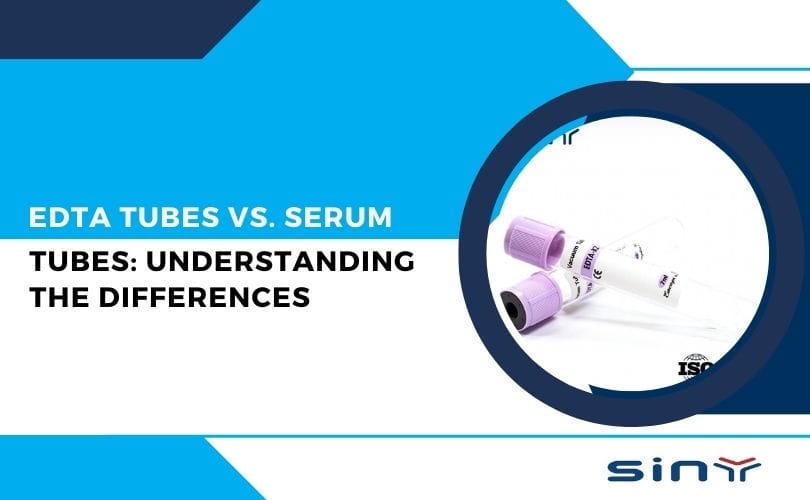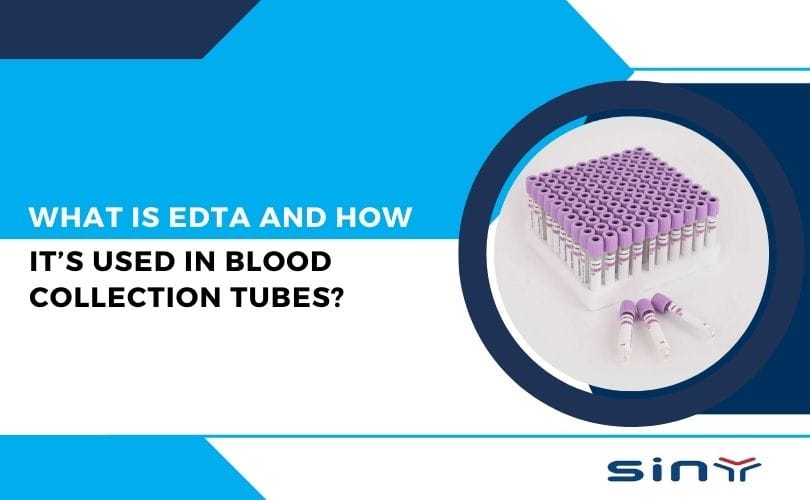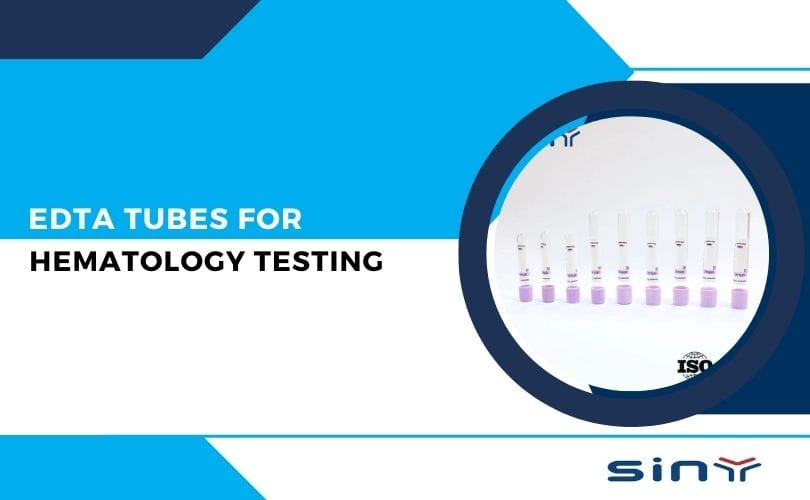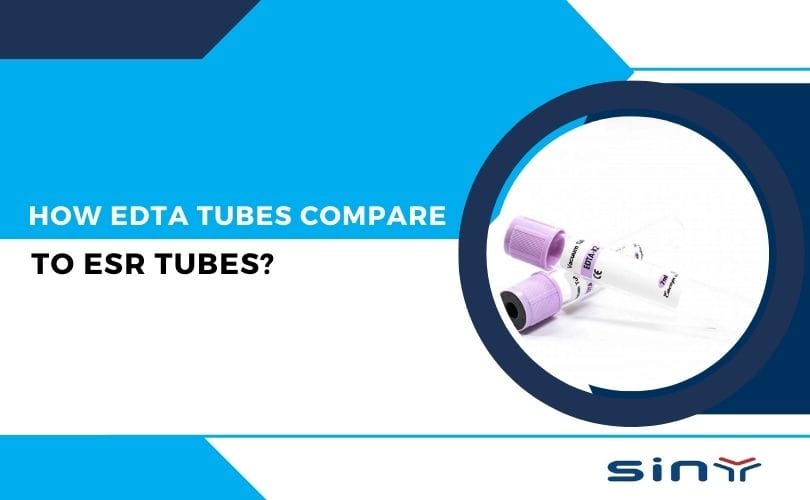In the world of diagnostics, accuracy is everything. A small mistake in blood collection or using the wrong type of tube can change test results completely. That’s why medical professionals pay special attention to the type of tube they use. Among the most common options are EDTA tubes and serum tubes.
At first glance, these tubes may look almost identical. Both are used for drawing blood, both are found in hospitals and diagnostic centers, and both play a vital role in laboratory testing. But inside, the difference lies in the additives, the way blood is processed, and the type of tests they’re suited for.
In this comprehensive guide, we’ll break down EDTA Tubes vs. Serum Tubes, looking at what they are, how they differ, their uses, pros and cons, and why choosing the right one matters so much for accurate diagnosis.
What Are EDTA Tubes?
EDTA tubes are blood collection tubes that contain ethylenediaminetetraacetic acid (EDTA), an anticoagulant that prevents blood from clotting. These tubes are primarily used for hematology tests, such as complete blood counts (CBC), blood typing, and molecular diagnostics.
Key Features of EDTA Tubes
- Anticoagulant Properties: EDTA binds to calcium ions in the blood, preventing coagulation.
- Color Coding: Typically identified by their lavender or purple caps.
- Applications: Used for tests requiring whole blood or plasma, such as CBC, hemoglobin A1c, and DNA analysis.
For more information on EDTA tubes, visit our EDTA Tube Product Category.
What Are Serum Tubes?
A serum tube, often with a red or yellow cap, is designed to allow the blood to clot. These tubes either have no additives or contain clot activators and sometimes a gel separator that helps in separating serum from cells after centrifugation.
When blood clots, the liquid part left after centrifugation is called serum—a rich fluid containing electrolytes, hormones, proteins, and antibodies, but without clotting factors.
Key Features of Serum Tubes
- Clot Activators: These tubes contain additives like silica or thrombin to accelerate clotting.
- Color Coding: Commonly identified by their red or gold caps.
- Applications: Used for tests requiring serum, such as cholesterol panels, liver function tests, and hormone assays.
Learn more about serum tubes from Sinymedical’s Serum Tube Guide.
EDTA Tubes vs. Serum Tubes: A Detailed Comparison
Understanding the differences between these two types of tubes is essential for accurate diagnostics. Below is a detailed comparison
| Feature | EDTA Tube | Serum Tube |
|---|---|---|
| Additive | EDTA anticoagulant | None or clot activator + gel |
| Cap Color | Purple, Lavender, Pink | Red, Yellow, or Gold |
| Blood State | Whole blood or plasma (doesn’t clot) | Clotted blood → serum |
| Best for | Hematology, CBC, DNA, blood films | Biochemistry, serology, immunology |
| Mechanism | Binds calcium → prevents clotting | Allows clotting, then separates serum |
| Sample Stability | Preserves cell morphology | Serum stable for chemistry tests |
| Processing | Requires mixing to prevent clots | Requires time for clotting before centrifuge |
This table shows just how much the choice of tube can impact what type of sample you end up with, and therefore, what tests can be performed.
For a comprehensive overview of blood collection tubes, check out Sinymedical’s Blood Collection Tubes Guide.
Applications of EDTA Tubes
EDTA tubes are indispensable in various medical and research settings. Here are some of their primary applications:
- Complete Blood Count (CBC): EDTA tubes are the standard for CBC tests, which analyze red blood cells, white blood cells, and platelets.
- Blood Typing: These tubes are used for blood group and Rh factor determination.
- Molecular Diagnostics: EDTA-preserved blood is ideal for DNA and RNA extraction for genetic testing.
Explore our range of EDTA tubes for blood collection here.
Applications of Serum Tubes
Serum tubes are equally vital in clinical diagnostics. Some of their key applications include:
- Biochemical Tests: Serum is used for analyzing electrolytes, enzymes, and metabolites.
- Immunological Assays: These tubes are used for antibody and antigen detection.
- Hormone Testing: Serum is essential for measuring hormones like thyroid-stimulating hormone (TSH) and cortisol.
For more details, visit Sinymedical’s EDTA Tube Guide.
Pros and Cons of EDTA Tubes
Advantages:
Prevent clotting effectively.
Preserve blood cell morphology.
Best for genetic and hematological studies.
Disadvantages:
Not suitable for tests requiring serum.
EDTA may falsely lower calcium and magnesium readings.
Pros and Cons of Serum Tubes
Advantages:
Ideal for biochemistry and immunology.
Provides clear serum after centrifugation.
Wide applicability for infectious disease testing.
Disadvantages:
Requires clotting time, which delays testing.
Not suitable for tests requiring intact blood cells.
Choosing the Right Tube for Your Needs
Selecting the appropriate tube depends on the type of test being conducted. Here are some guidelines:
- Use EDTA Tubes for tests requiring whole blood or plasma, such as CBC or molecular diagnostics.
- Use Serum Tubes for tests requiring serum, such as biochemical or immunological assays.
For assistance in choosing the right tube, contact us.
Summary
In conclusion, EDTA tubes and serum tubes serve distinct purposes in blood collection and diagnostics. Understanding their differences is crucial for accurate test results and effective patient care. Whether you need whole blood for a CBC or serum for a cholesterol panel, choosing the right tube ensures reliable outcomes.
For more information on EDTA tubes, visit our EDTA Tubes for Blood Collection page. watch our video on Sinymedical’s YouTube Channel or explore our products on Made-in-China.
FAQs
1. Can EDTA tubes be used instead of serum tubes?
No. EDTA prevents clotting, which makes it unsuitable for tests requiring serum.
2. What color cap is EDTA tube?
Purple, lavender, or pink.
3. Can serum tubes be used for CBC?
No. Serum tubes remove cells during clotting, so they’re not suitable for CBC.
4. Why does EDTA interfere with calcium tests?
Because EDTA binds calcium, lowering its measurable concentration.
5. Which tube is faster for processing?
EDTA tubes, since they don’t require waiting for clotting.






